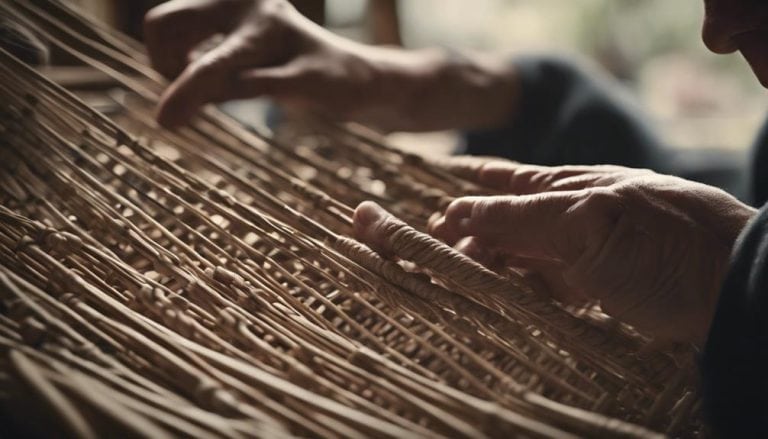Learning Danish Cord Weaving Techniques
Delving into Danish cord weaving, I discovered this traditional craft’s delicate dance of design and durability. From the initial selection of materials to the intricate weaving patterns, each step unveils a new layer of craftsmanship waiting to be mastered.
As I navigated the world of Danish cord techniques, I was captivated by the blend of artistry and practicality, setting the stage for a journey brimming with creative possibilities and skillful precision.
One learns Danish cord weaving techniques and explores intricate patterns using traditional methods. This craft involves weaving cords to create beautiful and durable designs.
Key Takeaways
- Experiment with color combinations and weave patterns for visual appeal and authenticity.
- Master fundamental and advanced weave techniques like envelope and Moller weaves.
- Maintain tension and reinforce stress points for durable and long-lasting chair seats.
- Personalize designs with unique colors and patterns inspired by personal preferences and experiences.
Choosing the Right Materials
When embarking on a Danish cord-weaving project, it is crucial to carefully select the appropriate materials to ensure an authentic and durable result. Material considerations play a significant role in this process. The two types of rope cord, laced and unlaced, both 1/8 inch in diameter, are commonly used.
The Danish rope cord, made of treated paper twisted into a three-ply rope for durability, is essential for achieving the desired look and strength. Color options are also important when choosing materials for your project. Depending on the original chair details, you may want to match the existing color scheme or go for a contrasting look to give the piece a fresh perspective.
Sourcing suppliers that offer quality Danish rope cords at competitive prices is key. By conducting price comparisons and ensuring you get the best deal, you can confidently proceed with your weaving project. Remember, the paper cord is typically sold by the pound, with approximately 180 feet per pound available.
Understanding Basic Weaving Patterns
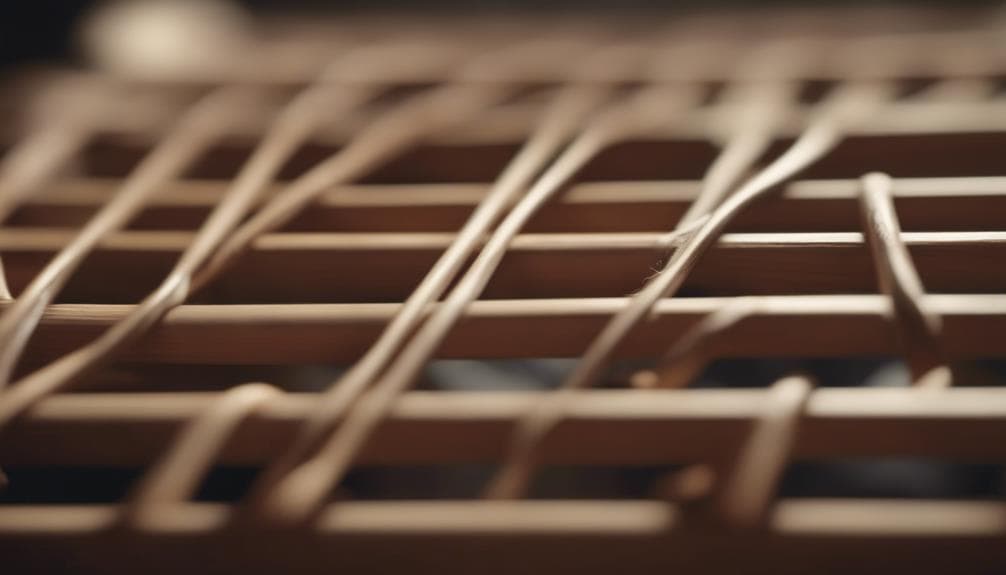
How can we master the basic weaving patterns used in Danish cord weaving to enhance our chair-making skills and craftsmanship? Understanding the foundational weaving patterns is crucial for creating beautiful and durable Danish cord chairs. Let’s delve into the key aspects that will help us grasp these patterns:
- Exploring Color Combinations: Playing with different color combinations can elevate the visual appeal of the woven patterns. By understanding how colors interact and complement each other, we can create unique and eye-catching designs that enhance the overall aesthetic of the chair.
- Understanding Tension Control: Maintaining consistent tension while weaving is essential for achieving a uniform and sturdy finish. Proper tension control ensures the Danish cord is securely fastened to the frame, preventing sagging or uneven weaving. Practice adjusting the tension to achieve the desired look and feel of the woven seat.
- Mastering Basic Weave Patterns: Get acquainted with common patterns like the envelope weave and Moller weave. These patterns involve specific over-under techniques that form the basis of Danish cord weaving. By mastering these fundamental patterns, you’ll be well-equipped to tackle more intricate designs in the future.
Mastering Advanced Weaving Techniques
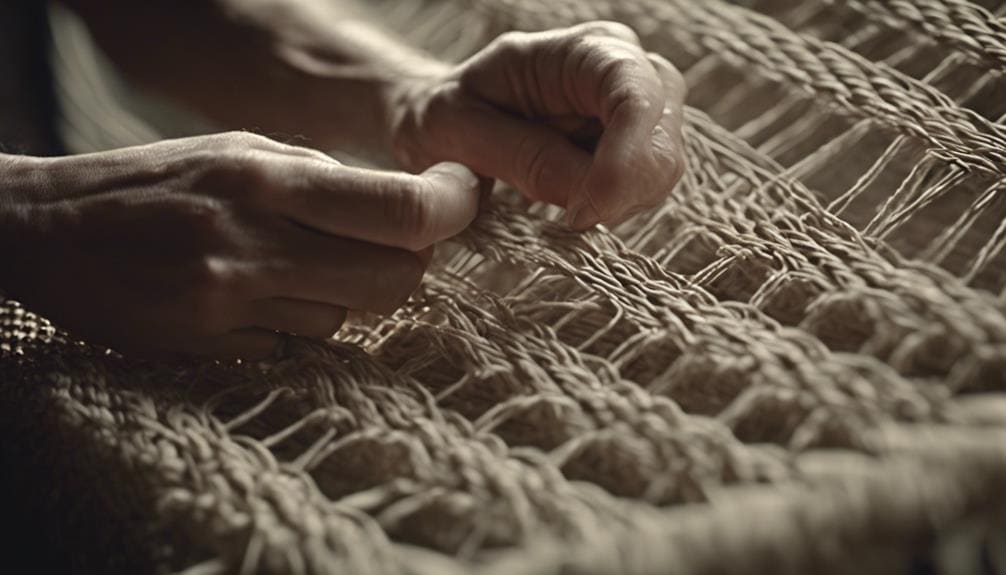
Mastering advanced weaving techniques in Danish cord weaving is essential to elevate our chair-making skills and craftsmanship to new heights. These techniques, like the intricate Moller weave pattern, offer a canvas for creating unique designs through expert craftsmanship.
Understanding the interplay between warp and weft in chair weaving unlocks a world of possibilities, allowing us to delve into envelope weave patterns that enhance the aesthetics of our woven chair seats. By mastering these advanced Danish cord weaving techniques, we elevate our skills and bring a sense of artistry and cohesion to our creations.
The ability to weave intricate patterns and incorporate unique designs is a hallmark of a skilled artisan, and it is through these advanced techniques, we can truly showcase our expertise. We can transform simple chair seats into masterpieces that reflect our elevated skills and passion for the craft with dedication and practice.
Tips for Ensuring Durability
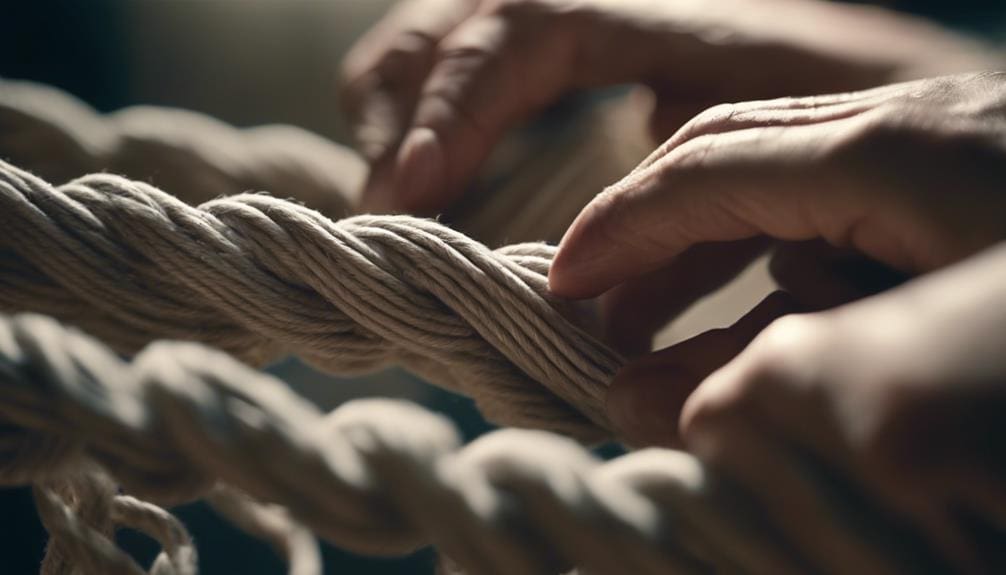
Ensuring the durability of Danish cord weaving involves utilizing high-quality materials and mastering proper weaving techniques for long-lasting results. To achieve this, consider the following tips:
- Maintaining Tension: Consistent tension throughout the weaving process is crucial for the durability of Danish cord seats. Uneven tension can lead to weak spots and premature wear. Regularly check the tension while weaving to ensure a sturdy and long-lasting result.
- Reinforcement Techniques: Understanding and implementing reinforcement techniques, such as adding extra loops or knots at stress points, can significantly enhance the durability of Danish cord weaving. These techniques help distribute weight evenly and prevent individual cords from bearing excessive strain.
- Choosing the Right Cord: The appropriate type and thickness of Danish cord for your specific furniture piece is essential for ensuring durability. Different pieces may require different cord characteristics to withstand daily use and longevity. Paying attention to these details can significantly affect the overall durability of your woven seats.
Adding a Personal Touch
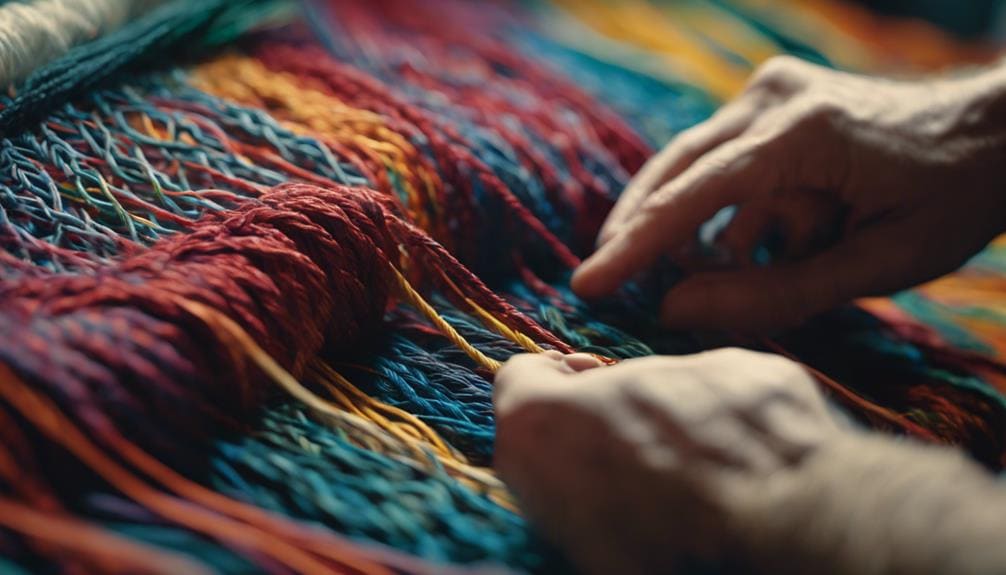
When personalizing Danish cord weaving, incorporating unique color combinations and patterns can enhance the visual appeal of the furniture piece. Color customization plays a crucial role in bringing out the personality of the weaver and the piece itself. By selecting hues that resonate with you or match the existing decor, you infuse a touch of individuality into the weaving process.
Drawing design inspiration from nature, art, or personal experiences can ignite weaving innovation and artistic expression. Experimenting with intricate patterns like envelope or Moller can elevate the final look, adding a distinct flair to your project.
This weaving journey is not just about technique; it’s about creating something that reflects your style and creativity. Tailoring the Danish cord weaving technique to match your preferences results in a personalized and visually appealing final product that speaks volumes about your attention to detail and passion for craftsmanship.
Exploring Creative Design Possibilities
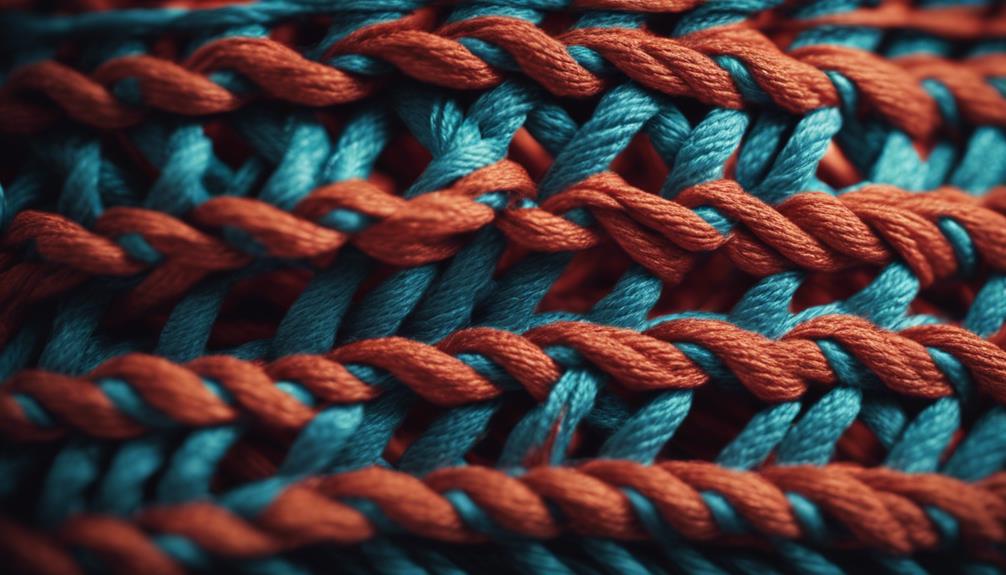
As we unlock the potential of Danish cord weaving techniques, a world of creative design possibilities unveils itself for chair seats and backs. The intricate weave patterns offer a canvas for exploration, allowing for the incorporation of various colors and textures to create visually striking pieces. Experimenting with different color combinations can evoke moods and styles while introducing innovative textures can add depth and interest to the overall design.
Understanding the historical influences of Danish cord weaving can inspire modern adaptations. Drawing from traditional techniques and motifs can infuse a sense of heritage and authenticity into contemporary chair designs. By blending the old with the new, artisans can craft pieces that resonate with classic elegance and innovative flair.
Exploring the warp and weft relationships in chair weaving opens up possibilities for creating unique and personalized designs. By manipulating these elements, we can achieve intricate patterns and geometric shapes that elevate the craftsmanship of the chair, transforming it into a true work of art.
Troubleshooting Common Weaving Challenges
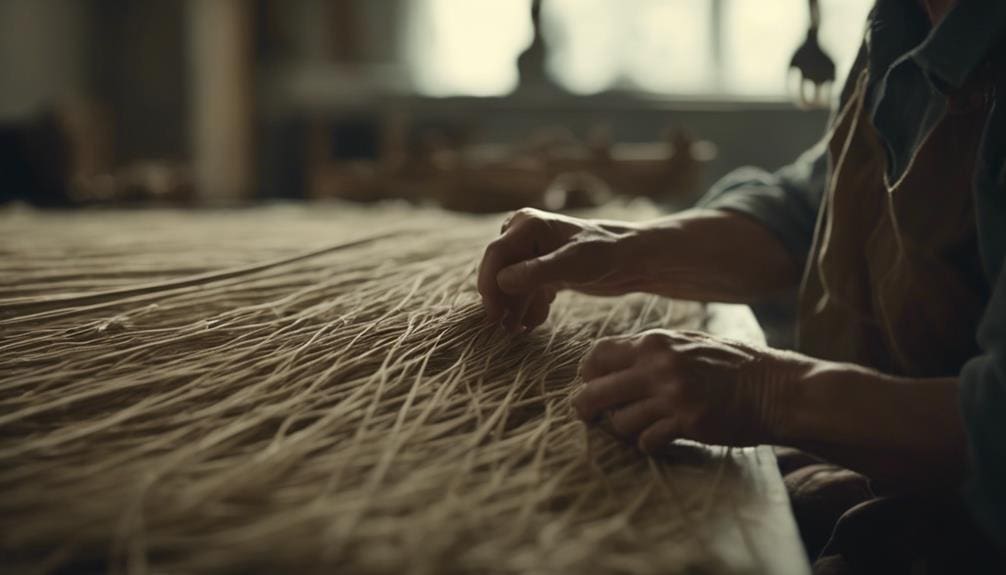
Maintaining consistent tension throughout the weaving process is key to achieving a successful outcome in troubleshooting common weaving challenges. Proper tension control ensures the weave is uniform and neat, avoiding loose or tight areas that could disrupt the overall pattern.
Cord alignment is another crucial aspect to pay attention to, as misaligned cords can lead to weaving mistakes that may be difficult to rectify once the weaving is completed. Here are some troubleshooting techniques to help address common issues that may arise during the weaving process:
| Challenge | Troubleshooting Techniques |
|---|---|
| Inconsistent tension | Adjust tension regularly as you weave, ensuring it remains even throughout the project. |
| Tangled cords | Patiently untangle the cords using a gentle touch to avoid damaging the weave. |
| Misaligned warp and weft | Double-check the alignment of the cords before each weaving step to maintain uniformity. |
| Weaving mistakes | Carefully undo the incorrect weave and redo that section following the correct pattern. |
Frequently Asked Questions
How Do You Weave a Danish Cord?
Weaving a Danish cord involves intricate steps. It demands attention to detail and patience. Choosing coordinating color options and mastering patterns is key. Tools like a fid and mallet are essential. Technique tips ensure a flawless finish.
What Is the Nail Spacing for Danish Cord Weaving?
Nail spacing for Danish cord weaving is crucial; it sets the stage for a perfect weave. The correct distance between nails ensures proper tension and alignment, guiding the weaving pattern beautifully. It’s a dance of precision and artistry.
What Is the Difference Between Laced and Unlaced Danish Cord?
The difference between laced and unlaced Danish cords lies in their appearance and texture. The laced cord has visible lacing, adding a textured, intricate look, while the unlaced cord is smooth and streamlined. Color options vary for both, enhancing weaving projects.
How Much Danish Cord Do I Need?
Estimating quantities of Danish cord for your project is key. Make sure to calculate the pounds needed based on the length per pound. Don’t forget to consider color options to match your design.
Conclusion
As I wrap up my journey into the world of Danish cord weaving techniques, I can’t help but marvel at the intricate dance of warp and weft that brings chairs to life. From mastering envelope weaves to tackling pesky weaving challenges, I’ve woven my way through it all with finesse and flair. So, if you’re ready to embark on this weaving adventure, buckle up and get ready to weave some magic into your furniture creations!






